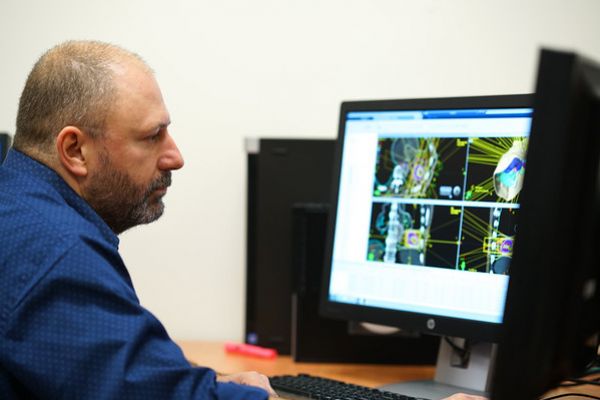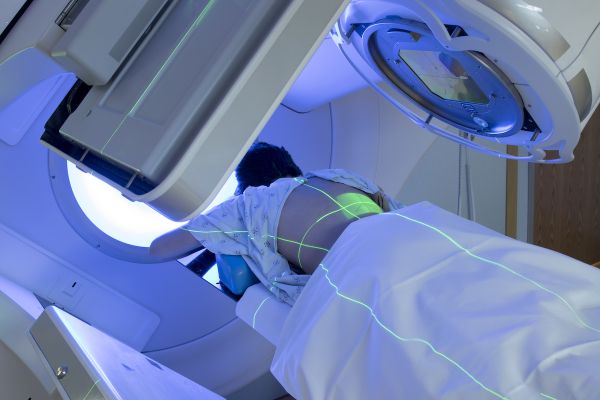Why 'One-and-Done' Radiation Therapy May Be Part of Your Treatment Plan
One of the most successful new approaches in radiation therapy, also called radiotherapy, is a method in which we divide the total radiation treatment into fewer treatments (or fractions) of larger doses, delivered over a shorter period of time. Stereotactic body radiotherapy uses advanced imaging with tumor tracking to target the radiation beams with such extreme precision that just a few treatment sessions — or a single session — can be as effective for cancer control as weeks of radiation therapy.
For example, with non-small cell lung cancer, radiotherapy treatment typically involved daily treatment sessions, five days a week for seven weeks. Patients would receive 2 grays (Gy) of radiation per day for 35 days, making the total dose 70 Gy. We’ve been able to get that kind of treatment down from 35 to just three to five treatments, and Roswell Park was the first center to look at delivering SBRT in a single fraction. In one of our studies, we compared giving a 30-Gy dose in one treatment to a 60-Gy dose delivered in three 20-Gy doses. The result? The one-dose regimen, which cut the patients’ total radiation by half, was at least as effective as the three-dose schedule, without any change in side effects.
Why Less Is More
The key lies in the pinpoint precision of the radiation beams so that the amount of healthy tissue that receives radiation is minimized. In addition, we use a number of devices that help keep the patient very still, such as a head frame and/or bead-filled pad that becomes a personalized body mold. We also synchronize the radiation with the patient's breathing to account for tumor movement.
We can use SBRT for a variety of solid-tumor cancers, including cancers of the lung, kidney, liver and prostate. The best candidates for the treatment are those with tumors that are 5 centimeters (cm) or smaller, although I have done it successfully on a 15 cm kidney tumor. We can also use SBRT on metastases. If a patient has five or fewer sites of metastatic disease, SBRT should be one of the options to consider. In addition, SBRT can be an option for patients who are not medically strong enough for surgery or don’t want surgery. At least in the case of lung cancer, we know SBRT is comparable to surgery, and a lot less traumatic to the body.
With stereotactic body radiotherapy, we can intensify treatment with less overall radiation exposure and fewer treatments, which have important implications for the patient, including improved convenience and quality of life and reduced costs. This is especially beneficial for patients who do not live nearby. Side effects with SBRT are generally the same as conventionally delivered radiotherapy, such as some pain in the treatment area or inflammation of surrounding tissues. Such side effects are rarely severe when done at experienced centers. SBRT can be part of a patient’s treatment plan, before or after other approaches, such as surgery and chemotherapy, and can be tailored to the medical needs and desires of each patient.
Never miss another Cancer Talk blog!
Sign up to receive our monthly Cancer Talk e-newsletter.
Sign up!In the Pipeline
We are studying the optimal way to use SBRT in a patient’s treatment plan, especially for patients eligible for immunotherapies such as Keytruda (pembrolizumab) and Opdivo (nivolumab). We know that these immunotherapies tend to work better after radiation, and with single-session radiotherapy, not only does it kill cancer cells effectively, but we’ve discovered that it triggers certain beneficial immune changes, too. As the cell is irradiated and dies, components inside it are exposed, so that the body can now detect them as foreign and send immune cells in to attack. Sequencing the treatment with immunotherapy could offer improved survival and better quality of life.



